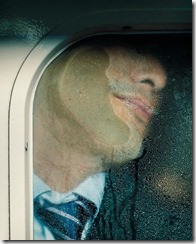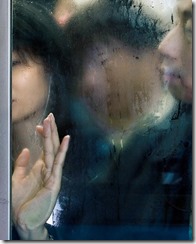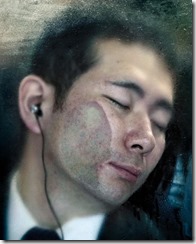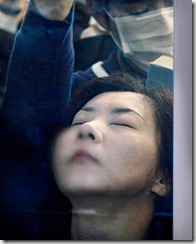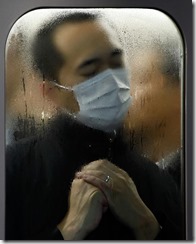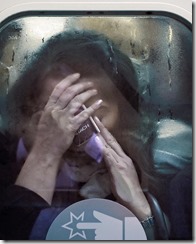Chapter Two Why You’re Not as Good a Driver as You Think You Are
Note:2@@@@@@@@@@@@@@@@@@@@@@@@@
Note:2@@@@@@@@@@@@@@@@@@@@@@@@@
Yellow highlight | Page: 51
If Driving Is So Easy, Why Is It So Hard for a Robot? What Teaching Machines to Drive Teaches Us About Driving
Note:t
Note:t
Yellow highlight | Page: 51
For those of us who aren’t brain surgeons, driving is probably the most complex everyday thing we do.
Note:INCASINATISSIMO
Note:INCASINATISSIMO
Yellow highlight | Page: 51
fifteen hundred “subskills.”
Note:CONTENUTO
Note:CONTENUTO
Yellow highlight | Page: 51
twenty per mile,
Note:DECISIONI PRESE
Note:DECISIONI PRESE
Yellow highlight | Page: 51
even as we may be sipping a latte, thinking about last night’s episode of American Idol, quieting a toddler, or checking voice mail.
Note:CONTEMPORANEAMENTE
Note:CONTEMPORANEAMENTE
Yellow highlight | Page: 51
a piece of information was presented every two feet, which at 30 miles per hour, the study reasoned, meant the driver was exposed to 1,320 “items of information,”
Note:INFO ELABORATE
Note:INFO ELABORATE
Yellow highlight | Page: 52
Driving becomes like breathing or an involuntary reflex.
Note:FACILITÀ
Note:FACILITÀ
Yellow highlight | Page: 52
Sebastian Thrun,
Note:ESPERTO DI SELF DRIVE CAR
Note:ESPERTO DI SELF DRIVE CAR
Yellow highlight | Page: 52
It would not work, for example, to simply tell Stanley to drive at a certain speed limit. “A person would slow down when they hit a rut,” Thrun said. “But a robot is not that smart. It would keep driving at thirty miles per hour until its death.”
Note:COSA NN DUNZIONA
Note:COSA NN DUNZIONA
Yellow highlight | Page: 52
Stanley was learning the way most of us learn to drive, not through rote classroom memorization of traffic rules and the viewing of blood-soaked safety films but through real-world observation, sitting in the backseats of our parents’ cars.
Note:X IMITAZION...EMULATORE
Note:X IMITAZION...EMULATORE
Yellow highlight | Page: 52
giving Stanley rules that were too rigid would cause him to overreact, like the autistic character played by Dustin Hoffman in the film Rain Man, who stops while crossing an intersection because the sign changes to DO NOT WALK.
Note:I ROBOT SONO PEGGIO DEGLI AUTISTIC
Note:I ROBOT SONO PEGGIO DEGLI AUTISTIC
Yellow highlight | Page: 53
There are myriad moments of uncertainty, or “noise.”
Note | Page: 53
UN RAMOSCELLO SULLA STRADA
Yellow highlight | Page: 53
Is that a rock in the middle of the street or a paper bag?
Note:GIUDICARE DI CONTINUO
Note:GIUDICARE DI CONTINUO
Yellow highlight | Page: 53
now consider doing all of it in the kind of environment in which most of us typically drive: not lonely desert passes but busy city and suburban streets.
Note:AMBIENTE URBANO
Note:AMBIENTE URBANO
Yellow highlight | Page: 53
Simply analyzing any random traffic scene, as we constantly do, is an enormous undertaking.
Note:NUMERO ENORME DI COMBINAZIONI
Note:NUMERO ENORME DI COMBINAZIONI
Yellow highlight | Page: 53
example of a driver coming upon a traffic island versus a stationary car. “If there’s a stationary car you behave fundamentally differently, you queue up behind it,” he says. “If it’s a traffic island you just drive around it. Humans take for granted that we can just look at this and recognize it instantly. To take camera data and be able to understand this is a traffic island, that technology just doesn’t exist.”
Note:ESEMPIO DI PROBLEMI
Note:ESEMPIO DI PROBLEMI
Yellow highlight | Page: 53
In certain ways, Junior has advantages over humans, which is precisely why some robotic devices, like adaptive cruise control—which tracks via lasers the distance to the car in front and reacts accordingly—have already begun to appear in cars.
Note:I VANTAGGI DEL ROBOT
Note:I VANTAGGI DEL ROBOT
Yellow highlight | Page: 54
Engineers call the moment when we’re too close to the amber light to stop and yet too far to make it through without catching some of the red phase the “dilemma zone.” And a dilemma it is.
Note:DILEMMA DEL SEMAFORO#########
Note:DILEMMA DEL SEMAFORO#########
Yellow highlight | Page: 54
drivers are struck from the rear when they try to stop for the light,
Note:INCIDENTE 1
Note:INCIDENTE 1
Yellow highlight | Page: 54
more serious crashes occur when drivers proceed and are hit broadside by a car entering the intersection.
Note:INCIDENTE 2
Note:INCIDENTE 2
Yellow highlight | Page: 55
In traffic, these sorts of dilemma zones occur all the time.
Note:C##########
Note:C##########
Yellow highlight | Page: 55
what if there is a pedestrian standing on the curb, just off the crosswalk? As the pedestrian isn’t in the road, he’s not classified as an obstacle.
Note:IL DILEMMA DEI PEDONI
Note:IL DILEMMA DEI PEDONI
Yellow highlight | Page: 55
robot would somehow have to interpret the pedestrian’s body language, or be trained to analyze eye contact and facial gestures.
Note:VUOLE ATRAVERSARE?
Note:VUOLE ATRAVERSARE?
Yellow highlight | Page: 55
Would you feel comfortable crossing in front of a driverless Terminator?
Note:RISPONDI
Note:RISPONDI
Yellow highlight | Page: 56
Let’s say a traffic signal is broken.
Note:SI È INCANTATO IL VROSSO
Note:SI È INCANTATO IL VROSSO
Yellow highlight | Page: 56
After some hesitation, you probably, and very carefully, went through the red.
Note:Ccccccccc
Note:Ccccccccc
Yellow highlight | Page: 56
What about the question of who proceeds first at a four-way stop?
Note:CHI È ARRIVATO PRIMA?
Note:CHI È ARRIVATO PRIMA?
Yellow highlight | Page: 56
Now picture four robot drivers who arrived at the exact same moment. If they were programmed to let the person who arrived first go first, two things might happen: They might all go first and collide or they might all sit frozen, the intersection version of a computer crash. So
Note:STALLO O MACELLO
Note:STALLO O MACELLO
Yellow highlight | Page: 56
the best way for Stanley and Junior to learn how to drive was to study how humans drive.
Note:RIPETIAMO
Note:RIPETIAMO
Yellow highlight | Page: 57
some of these little optimizations, like being a jerk at a stop sign, cause problems for everyone. They slow everyone down.”
Note:PUNTARE SULLA PRONTEZZA È DANNOSO
Note:PUNTARE SULLA PRONTEZZA È DANNOSO
Yellow highlight | Page: 57
The advantage robots have in the long run is that the hardware and software keep getting better. We humans must use what we’re born with.
Note:L UNICO VANTAGGIO DEI CODICI SULL EMULATORE
Note:L UNICO VANTAGGIO DEI CODICI SULL EMULATORE
Yellow highlight | Page: 57
How’s My Driving? How the Hell Should I Know? Why Lack of Feedback Fails Us on the Road
Note:Ttttttttttt
Note:Ttttttttttt
Yellow highlight | Page: 58
What keeps the site running, however, is not the prowess of its fraud squad—which would hardly have time to monitor more than a fraction of the many millions of daily auctions—but a more simple mechanism: feedback. The desire to get positive feedback and avoid negative feedback
Note:IL SEGRETO DI EBAY
Note:IL SEGRETO DI EBAY
Yellow highlight | Page: 58
What if there was an eBay-like system of “reputation management” for traffic? This idea was raised in a provocative paper by Lior J. Strahilevitz,
Note:REPUTAZIONE COME SU E BAY
Note:REPUTAZIONE COME SU E BAY
Yellow highlight | Page: 58
“A modern, urban freeway is a lot like eBay, without reputation scores,” he wrote. “Most drivers on the freeway are reasonably skilled and willing to cooperate conditionally with fellow drivers, but there is a sizeable minority that imposes substantial costs on other drivers,
Note:AUTOSTRADE CGOME E BAY
Note:AUTOSTRADE CGOME E BAY
Yellow highlight | Page: 58
the idea is that drivers, when witnessing an act of dangerous or illegal driving, could phone a call center and lodge a complaint, using mandatory identification numbers
Note:L IDEA
Note:L IDEA
Yellow highlight | Page: 59
What about privacy concerns? Well, that’s exactly the point: People are free to terrorize others on the road because their identity is largely protected.
Note | Page: 59
PRIVACY
Yellow highlight | Page: 59
Less ambitious and official versions of this have been tried.16 The Web site Platewire.com, which was begun, in the words of its founder, “to make people more accountable for their actions on the roadways in one forum or another,” gives drivers a place to lodge complaints about bad drivers, along with the offenders’ license plate numbers; posts chastise “Too Busy Brushing Her Hair” in California and “Audi A-hole” in New Jersey. Much less frequently, users give kudos to good drivers.
Note:ESEMPI CONCRETI
Note:ESEMPI CONCRETI
Yellow highlight | Page: 60
Not surprisingly, if we were to ask ourselves “How’s my driving?,” research has shown that the answer would probably be a big thumbs-up—regardless of one’s actual driving record.
Note:NESSUNO CI DÀ BRUTTI VOTI SULLA STRADA
Note:NESSUNO CI DÀ BRUTTI VOTI SULLA STRADA
Yellow highlight | Page: 60
Monty Python: “We Are All Above Average!” Psychologists have called this phenomenon “optimistic bias” (or the “above-average effect”), and it is still something of a mystery why we do it. It might be that we want to make ourselves out to be better than others in a kind of downward comparison, the way the people in line in the first chapter assessed their own well-being by turning around to look at those lesser beings at the back of the queue. Or it might be the psychic crutch we need to more confidently face driving, the most dangerous thing19 most of us will ever do.
Note:OPTIMISTIC BIAS
Note:OPTIMISTIC BIAS
Yellow highlight | Page: 60
The above-average effect helps explain resistance (in the early stages, at least) to new traffic safety measures, from seat belts to cell phone restrictions.
Note:CONTRO LA CINTURA
Note:CONTRO LA CINTURA
Yellow highlight | Page: 61
Psychologists have suggested that the “Lake Wobegon effect”—“where all the children are above average”—is stronger when the skills in question are ambiguous.
Note:AMBIGUITÀ
Note:AMBIGUITÀ
Yellow highlight | Page: 61
a person less versed in the proper rules of English grammar will be less able to judge the correctness of grammar
Note:DNNING KRUGER EFFECT
Note:DNNING KRUGER EFFECT
Yellow highlight | Page: 61
a driver who is not fully aware of the risks of tailgating or the rules of traffic is hardly in a good position to evaluate their own relative risk or driving performance compared to everyone else’s.
Note:ESEMPIO
Note:ESEMPIO
Yellow highlight | Page: 61
Rather like the survey data that show a mathematical disconnect between the number of sexual partners men and women claim to have had,32 polls of aggressive driving behavior find more people seeing it than doing it.
Note:ANALOGIA COL SESSO
Note:ANALOGIA COL SESSO
Yellow highlight | Page: 62
A ticket is a rare event that one grumblingly attributes to police officers
Note:ES DI TICKET ANNULLABILE
Note:ES DI TICKET ANNULLABILE
Yellow highlight | Page: 62
a honk from another driver is a cause for anger, not shame or remorse; a crash might be seen as pure bad luck.
Note:ALTRI ESEM
Note:ALTRI ESEM
Yellow highlight | Page: 62
There is little feedback at all. We drive largely without incident every day,
Note:LA MORALE
Note:LA MORALE
Yellow highlight | Page: 64
“If we were to put a DriveCam in your car, not knowing you at all, I guarantee you that you’ve got driving habits you’re not even aware of that are an accident waiting to happen.”
Note:SI PUÒ DIRE DI TUTTI
Note:SI PUÒ DIRE DI TUTTI
Yellow highlight | Page: 64
The key to reducing what DriveCam calls “preventable accidents,” as Lisk sees it, lies at the bottom of the triangle, in all those hidden and forgotten near misses.
Note:COME RIDURRE GLI INCIDENTI
Note:COME RIDURRE GLI INCIDENTI
Yellow highlight | Page: 64
a driver thinks of their own performance in terms of crashes and traffic tickets.
Note:SBAGLIATO
Note:SBAGLIATO
Yellow highlight | Page: 65
Not only was the driver unaware of the real hazards he was subjecting himself and others to in the way he was driving, he was not even aware that he was unaware.
Note:LA PURA FORTUNA...QS SCONOSCIUTA
Note:LA PURA FORTUNA...QS SCONOSCIUTA
Yellow highlight | Page: 65
The press repeatedly called it an “accident.”
Note:NN SNO INCIDENTI VISTO CHE SONO REVEDIBILI
Note:NN SNO INCIDENTI VISTO CHE SONO REVEDIBILI
Yellow highlight | Page: 66
Were the Hancock and Janklow crashes really unpredictable or unpreventable?
Note:NN È MAI UN INCIDENTE
Note:NN È MAI UN INCIDENTE
Yellow highlight | Page: 66
Most crashes involve a violation of traffic laws, whether intentional or not.
Note:LEGGE
Note:LEGGE
Yellow highlight | Page: 66
In 2006, a Chicago driver reaching for a cell phone while driving lost control of his SUV, killing a passenger in another car. The victim’s family declared, “If he didn’t drink or use drugs, then it’s an accident.”
Note:ANCHE L INTENZIONALITÀ SFUMA
Note:ANCHE L INTENZIONALITÀ SFUMA
Yellow highlight | Page: 66
“no drugs or alcohol were involved,”
Note:A MOLTI BASTA X LEVARE L INTENZIONALITÀ
Note:A MOLTI BASTA X LEVARE L INTENZIONALITÀ
Yellow highlight | Page: 67
The psychologist Richard Wiseman has demonstrated in experiments that people are also capable of making their own “luck.” For example, people who know lots of people are more likely to have seemingly lucky “small-world” encounters
Note:COSTRUIRSI LA FORTUNA....VALE ANCHE IN STRADA
Note:COSTRUIRSI LA FORTUNA....VALE ANCHE IN STRADA
Yellow highlight | Page: 67
Psychologists have demonstrated that our memory, as you might expect, is tilted in favor of more recent things. We also tend to emphasize the ends of things
Note:LA MEMORIA DIFETTOSA
Note:LA MEMORIA DIFETTOSA
Yellow highlight | Page: 68
They tend to look overwhelmingly near the front of the car and at the edge markings of the road. They tend not to look at the external mirrors very often,
Note:I NOVIZI
Note:I NOVIZI
Yellow highlight | Page: 68
Teenage drivers
Note:PERICOLOSISSIMI
Note:PERICOLOSISSIMI
Yellow highlight | Page: 69
“The riskiest drivers dropped their safety-relevant behaviors by seventy-six percent,
Note:76%
Note:76%
Yellow highlight | Page: 70
The things that DriveCam finds itself coaching drivers on most often do not involve actual driving skills per se—like cornering ability or obstacle avoidance—but mistakes that are born from overconfidence.
Note:METTERE UN VIDEOCAMERA E RIGUARDARSI. UTILE
Note:METTERE UN VIDEOCAMERA E RIGUARDARSI. UTILE
Yellow highlight | Page: 70
As the sense of routine begins to take over, we begin to ratchet up our sense of the possible
Note:AVANZAMENTO VERSO LA SOGLIA DLLL XICOLO
Note:AVANZAMENTO VERSO LA SOGLIA DLLL XICOLO
Yellow highlight | Page: 71
“We see a lot of collisions where the driver hasn’t slowed down enough when they’re approaching that high-risk, open-lane situation.” This may help explain why EZ Pass–style automated payment lanes at tollbooths, which should theoretically help reduce crashes at these statistically risky areas—drivers no longer have to fumble for change—have been shown to increase crash rates.
Note:TELEPASS....I PERICOLI DI AFFIACARE CORSIE SCORREVOLI A ORSIE LENTE
Note:TELEPASS....I PERICOLI DI AFFIACARE CORSIE SCORREVOLI A ORSIE LENTE
Yellow highlight | Page: 72
“Baker’s law,” named after crash reconstructionist J. Stannard Baker, notes that drivers “tend to explain58 their traffic accidents by reporting circumstances of lowest culpability compatible with credibility”—that is, the most believable story they can get away with.
Note:BARKER LAW
Note:BARKER LAW
Yellow highlight | Page: 72
What seems to gives us the most trouble, apart from our over-confidence and lack of feedback in driving, are the two areas in which Stanley and Junior, Stanford’s clumsy robot drivers, have a decided edge. The first is the way we sense and perceive things. As amazing as this process is, we do not always interpret things correctly.
Note:LE QUATTRO COSE CHE CI CREANO PROBLEMI
Note:LE QUATTRO COSE CHE CI CREANO PROBLEMI
Yellow highlight | Page: 73
we are not driving machines: We cannot keep up a constant level of vigilance.
ALTRO PROBLEMA
ALTRO PROBLEMA

